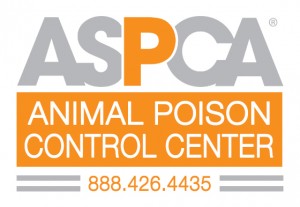Recent Posts
Recent Comments
- Name *Danielle on My cat has squamous cell carcinoma | Dr. Justine Lee, DACVECC, DABT, Board-Certified Veterinary Specialist
- user-399256 on Pet Hoarders: How many cats are too many? | Dr. Justine Lee
- Aileen on Should you get an automatic pet feeder for your dog or cat?
- Name *PP on How to euthanize a dog with Tylenol… and why you don’t….
- slkdj on Pet Hoarders: How many cats are too many? | Dr. Justine Lee
Archives
- February 2022
- August 2021
- December 2020
- November 2020
- August 2020
- June 2020
- May 2020
- April 2020
- March 2020
- February 2020
- January 2020
- December 2019
- November 2019
- October 2019
- August 2019
- June 2019
- May 2019
- March 2019
- February 2019
- January 2019
- December 2018
- November 2018
- October 2018
- September 2018
- August 2018
- July 2018
- June 2018
- May 2018
- April 2018
- March 2018
- February 2018
- January 2018
- December 2017
- November 2017
- October 2017
- September 2017
- August 2017
- July 2017
- June 2017
- May 2017
- April 2017
- March 2017
- February 2017
- January 2017
- December 2016
- November 2016
- October 2016
- September 2016
- August 2016
- July 2016
- June 2016
- May 2016
- April 2016
- March 2016
- February 2016
- January 2016
- December 2015
- November 2015
- October 2015
- September 2015
- August 2015
- July 2015
- June 2015
- May 2015
- April 2015
- March 2015
- February 2015
- January 2015
- December 2014
- November 2014
- October 2014
- September 2014
- August 2014
- July 2014
- June 2014
- May 2014

5-FU topical chemotherapy poisoning in dogs | Dr. Justine Lee, DACVECC, DABT
Posted by justinelee in Blog, Pet Health
My dog chewed my 5-FU.
If this happened to you, get to your veterinarian or emergency veterinarian STAT, even if it’s in the middle of the night. That’s because this topical medication is deadly to dogs (and cats) when ingested. Even CNN talking about this after the FDA had multiple reports of dogs DYING from this topical human chemotherapy cream.
5-Fluorouracil (abbreviated 5-FU), commonly known by the brand names Efudex®, Carac®, Adrucil®, and Fluoroplex®, is a chemotherapy medication used for humans with skin cancer like superficial basal cell cancer or actinic keratosis. It is commonly sold in low concentration products (e.g., 0.5-5%), and works by inhibiting DNA and RNA synthesis and production, resulting in programmed cell death.
Since people put it on their skin (and don’t ingest it orally), they don’t think it’s as “dangerous.” However, it’s extremely poisoning to dogs and as little as one tube can kill an 80 pound dog. Dogs (and rarely, cats) are commonly exposed to the cream either from licking it directly off you or getting into the tube directly.
So, how dangerous is it? 5-FU is actually one of the top 5 deadly poisons seen at the ASPCA Animal Poison Control Center.
If your dog or cat gets into 5-FU, signs of poisoning can be seen quickly – within 30 minutes up to 6 hours; death has been reported as early as 7 hours. Signs of 5-FU poisoning include:
Just how poisonous is it? In my opinion as a veterinary specialist and toxicologist, any ingestion needs to be treated by your veterinarian immediately. The lowest reported toxic (oral) dose in dogs is 6 mg/kg, while the minimal reported lethal dose is 20 mg/kg. There is one published case report of a dog that did survive an ingestion of 46 mg/kg of 5-FU with aggressive supportive care and 24/7 hospitalization (for days). That said, the reported survival in dogs is only about 1 out of every 4 dogs (25%). Death (or euthanasia) typically occurs because of secondary complications from the 5-FU such as sepsis (due to a life-threateningly low white blood cell count), increased brain edema and brain pressure (due to persistent seizures), intracranial hemorrhage (due to a life-threateningly low platelet count), or even clotting problems.
Treatment includes:
Typically blood work needs to be done 12-24 hours while hospitalized, and then every 3-4 days for 2-3 weeks to monitor the chemotherapy affects on the bone marrow.
Unfortunately, by the time your dog shows any signs of poisoning, it may be too late. That’s why it’s so important to keep this topical medication out of reach – not on counters, in purses or backpacks, etc. If you do think your dog ate some, call your veterinarian, your emergency veterinarian, or the ASPCA Animal Poison Control Center immediately.

Reference:
Powell LL. 5-Fluorouracil. The Five-Minute Veterinary Consult Clinical Companion: Small Animal Toxicology. Ames, IO: Wiley-Blackwell. pp. 164-169.
Dorman DC1, Coddington KA, Richardson RC. 5-Fluorouracil toxicosis in the dog. J Vet Intern Med. 1990 Sep-Oct;4(5):254-7.
Roberts J, Powell LL. Accidental 5‐Fluorouracil Exposure in a Dog. J Vet Emerg Crit Care 2001;11(4):281-286.